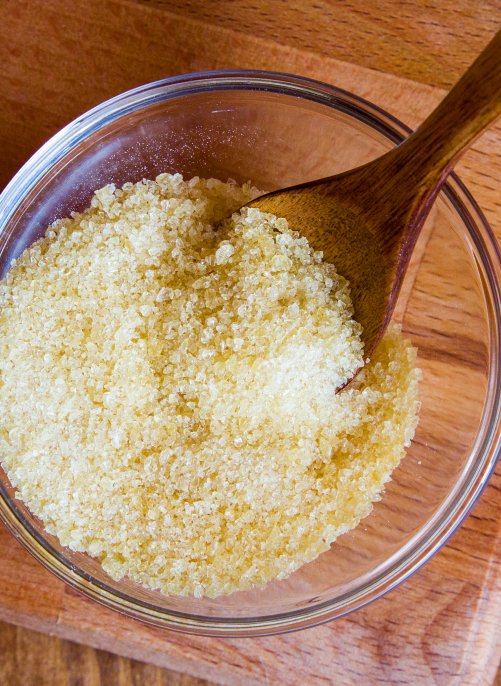The first thing to understand when looking at gelatine is what it actually is. Gelatine is a colourless and flavourless ingredient, that is commonly derived from collagen from animals. It can come in two forms when used in baking, either a brittle sheet or as a powder, but most recipes will call for the sheets to be used. The sheets need to be soaked in water to change the consistency from a brittle sheet to a gummy consistency.
Using Gelatine in baking
Gelatine is used in many different baking products, mainly being used as a gelling agent. Some of the most common desserts or bakery items that contain gelatine can include trifles, marshmallows and jellies. It is also very commonly used in confectionary products like gummy bears and other chewy sweets.
It is important to understand how best to use gelatine, as there can be some mistakes that could be easily made and can have significant problems in the end product. Firstly, it is important to know that gelatine will only set once it has chilled. This means that in using it you should always allow for the time required for the product to cool and set completely.
Read More
A mistake people can often make is to boil a mixture once it has had gelatine added to it. You should never do this as it can cause the gelatine to scorch, which can affect the finished texture of the product.
When using gelatine, it is vital to make sure that you are using the correct quantity to set the product you are trying to set. Leaf gelatine is the most commonly used type, and as a general rule if trying to set a jelly you will need four leaves of gelatine to set a pint of liquid (providing the liquid mix is roughly the consistency of water. Adding too much gelatine will create a rubbery texture, and too little gelatine in the mix will mean it will not set completely and may not hold when cut or demoulded.
Alternatives to Gelatine
There are some alternatives to gelatine, and these can be particularly useful if you are following a vegan diet. One of the most prominent options used is agar agar, which is used in the same way as gelatine. A big difference between the two is that agar agar is normally found in a powder form, although it is also possible to find it in a sheet form like gelatine. If you are planning to replace gelatine in a recipe then agar agar can be substituted for gelatine at a ratio of 1:1, so measurements can be kept the same.
A second option for an alternative is Carrageenan. Carrageenan is also a vegan alternative, and is derived from red seaweed, and develops a gel-like consistency once it has been boiled. It is very commonly used in supermarket products, like ice creams or marshmallows. It is also found mainly in a powder form, and has a slightly softer texture than gelatine.

